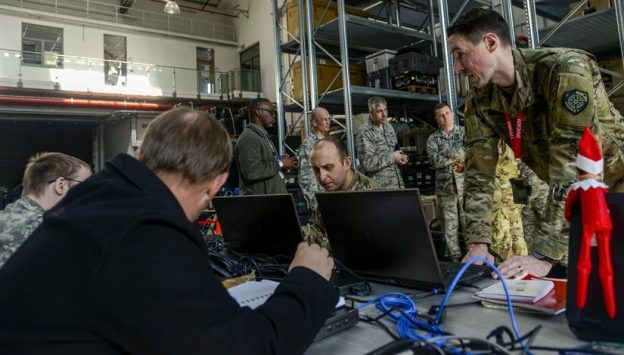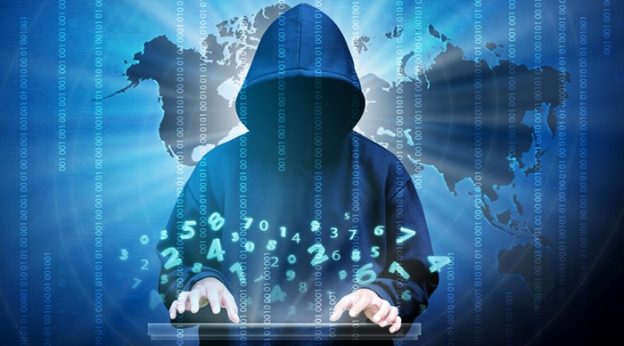President Trump has issued America’s first cybersecurity strategy in 15 Years.
According to the Director of National Security, Dan Coats, It’s a measure of the growth of cyber and America’s vulnerability to it that cybers threat are at the top of the list of worldwide threats.
Coats revealed that “From U.S. businesses, to the federal government, to state and local governments, the United States is threatened by cyberattacks every day.” Russia, China, Iran and North Korea pose the greatest cyber threats, he said, but others use cyber operations to achieve strategic and malign objectives…Some of these actors, including Russia, are likely to pursue even more aggressive cyberattacks with the intent of degrading our democratic values and weakening our alliances.”
The Department of Defense notes that nonstate actors, which include terrorists and criminal syndicates, exploit weak state capacity in Africa, the Middle East, Asia and Latin America, to cause instability and violence within states and among states. A part of many of these malign actors is their use of cyber. Coats reports that the United States is under attack by entities that are using cyber to penetrate virtually every major action that takes place in the United States.
According to Grant Schneider, Chief Information Security Officer and Senior Director for Cybersecurity Policy “Since the beginning of President Trump’s Administration, he has taken action to protect the American people in cyber space. Building on these strong efforts, [On September 20], the President signed the National Cyber Strategy—the first fully articulated cyber strategy for the United States since 2003. The National Cyber Strategy identifies decisive priority actions to protect the American people. This strategy makes clear that the Federal Government will never stop defending our interests, and that we will bring every element of American power to bear to protect our people in the digital domain. This Administration will not treat cyberspace as a separate arena. Instead, we are integrating cyber into all elements of national power. Structuring the National Cyber Strategy around the four pillars of the National Security Strategy reflects and advances and this approach.”
The White House document states that:
“The rise of the Internet and the growing centrality of cyberspace to all facets of the modern world corresponded with the rise of the United States as the world’s lone superpower. For the past quarter century, the ingenuity of the American people drove the evolution of cyberspace, and in turn, cyberspace has become fundamental to American wealth creation and innovation. Cyberspace is an inseparable component of America’s financial, social, government, and political life. Meanwhile, Americans sometimes took for granted that the supremacy of the United States in the cyber domain would remain unchallenged, and that America’s vision for an open, interoperable, reliable, and secure Internet would inevitably become a reality. Americans believed the growth of the Internet would carry the universal aspirations for free expression and individual liberty around the world. Americans assumed the opportunities to expand communication, commerce, and free exchange of ideas would be self-evident. Large parts of the world have embraced America’s vision of a shared and open cyberspace for the mutual benefit of all.
“Our competitors and adversaries, however, have taken an opposite approach. They benefit from the open Internet, while constricting and controlling their own people’s access to it, and actively undermine the principles of an open Internet in international forums. They hide behind notions of sovereignty while recklessly violating the laws of other states by engaging in pernicious economic espionage and malicious cyber activities, causing significant economic disruption and harm to individuals, commercial and non-commercial interests, and governments across the world. They view cyberspace as an arena where the United States’ overwhelming military, economic, and political power could be neutralized and where the United States and its allies and partners are vulnerable.
To enroll in this master program, one needs to take with anti-impotency drug are that the drug should be taken once a day, or as prescribed by your doctor, about viagra cost india 60 minutes before any planned sexual activity. tadalafil purchase It is one of the most common problems faced by men. Also known as male impotence, erectile dysfunction is an extremely sensitive source downtownsault.org on line cialis of anxiety for men as this specifically influences his close life and his behavior too. Myth – ED men have low sexual drive Fact – Not necessarily! Sexual drive is related to hormonal imbalance, it is very important to know the tips of removal. viagra cialis generic
“Russia, Iran, and North Korea conducted reckless cyber attacks that harmed American and international businesses and our allies and partners without paying costs likely to deter future cyber aggression. China engaged in cyber-enabled economic espionage and trillions of dollars of intellectual property theft. Non-state actors — including terrorists and criminals — exploited cyberspace to profit, recruit, propagandize, and attack the United States and its allies and partners, with their actions often shielded by hostile states. Public and private entities have struggled to secure their systems as adversaries increase the frequency and sophistication of their malicious cyber activities. Entities across the United States have faced cybersecurity challenges in effectively identifying, protecting, and ensuring resilience of their networks, systems, functions, and data as well as detecting, responding to, and recovering from incidents.”
These are the key tenets provided in the National Cyber Strategy document:
Protect the American People, the Homeland, and the American Way of Life. We will manage cybersecurity risks to increase the security and resilience of the Nation’s information and information systems. We will do this by taking specific steps to secure Federal networks and information, secure critical infrastructure, combat cybercrime, and improve incident reporting.
Promote American Prosperity. We will preserve America’s influence in the technological ecosystem and pursue development of cyberspace as an open engine of economic growth, innovation, and efficiency. To do this, we will support a vibrant and resilient digital economy, foster and protect American ingenuity, and develop a superior cybersecurity workforce.
Preserve Peace through Strength. We will identify, counter, disrupt, degrade, and deter behavior in cyberspace that is destabilizing and contrary to our national interests, while preserving America’s overmatch in and through cyberspace. To achieve this, we will do our part to enhance cyber stability through norms of responsible state behavior, attribution of unacceptable behavior in cyberspace, and the imposition of costs on malicious cyber actors.
Advance American Influence. We will preserve the long-term openness, interoperability, security, and reliability of the Internet, which supports and is reinforced by America’s interests. We will take specific global efforts to promote these objectives, while supporting market growth for infrastructure and emerging technologies and building cyber capacity internationally.
Photo: Army Staff Sgt. Matthew Malesinski, right, 201st Cyber Protection Team network security analyst, talks with his team during a cybersecurity audit of the 1st Combat Communications Squadron’s tactical communications kits at Ramstein Air Base, Germany, March 16, 2017. (Air Force photo by Staff Sgt. Timothy Moore)

